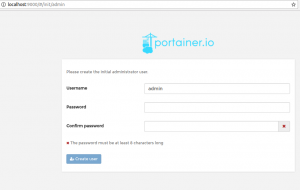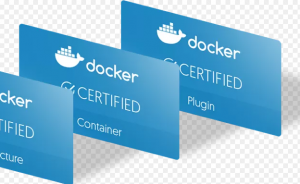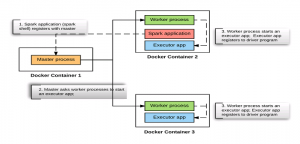Category Archives: Dockers
Configure Nexus Repository for Docker Registry (Windows)

In this post, you will learn about how to configure Nexus Repository OSS on Windows as a Docker Private Registry. The goal of doing this can be some of the following: Allow developers to push/pull images from local docker image repository installed within the company-wide private network Allow Jenkins jobs to pull images for running automated tasks One of the key aspects of DevOps automation using Docker containers is setting up private Docker registry which could be accessed by developers. This tutorial would help in setting up Nexus repository as a private Docker registry. How to Configure Nexus Repository OSS on Windows for Private Docker Registry The following are the steps to configure Nexus Repository OSS …
Docker UI App – How to Get Started with Docker UCP

Docker Universal Control Plane (UCP) is a containerized web application (UI-based) that runs on Docker Enterprise Edition and makes it easier to deploy, configure, and monitor your applications at scale. You could as well get started with Docker UCP on your Docker community edition (CE). In this post, you would learn about some of the following: Brief introduction to Docker UCP Installation instructions for UCP Logging into UCP Brief overview of Docker UCP dashboard Brief introduction to Docker UCP One can do some of the following using Docker UCP: From Docker UCP UI, deploy applications using docker-compose.yml Using Docker UCP CLI, deploy applications using docker-compose.yml. Commands such as docker stack …
Docker UI App – How to Install Portainer

Portainer is a Docker UI app which can be used to manage one or more docker environments locally or remotely with ease. It provides a detailed overview of Docker environment including UI access to manage containers, images, networks and volumes. In addition, it helps in managing different aspects of Docker environment such as managing Docker images, containers etc. One of the most cool features is user management. You would be able to create users and associate it with different Docker environments (locally or remotely). In this post, you will learn about how to install Portainer on your Linux desktop environment having Docker runtime engine. How to install Portainer on Linux …
5 Reasons to get Docker Certified Associate Certification

Docker certification is about passing Docker Certified Associate (DCA) exam and getting recognition for your Docker skills. The following are some of the benefits mentioned on the Docker certification page. Recognition for your Docker skills with an official Docker credential Digital certificate and use of the Docker Certified Associate logo Exclusive access to the Docker Certified professional network on LinkedIn and invites to certified-only events However, I believe there is much more to why developers should consider going through the Docker certification exam preparation, if not, take the exam and get certified. In this post, I would like to present some perspectives in relation to Docker certification. In the process, …
Docker Certification Practice Questions – Dockerfile

Docker allows applications to run securely while being isolated in a container, packaged with all its dependencies and libraries. It has become extremely popular virtualization technology of recent times. Thus, it makes it much more important to learn this technology and complement your developer’s experience as it not only enhances your productivity but also help you in your career from an overall perspective. Read this post in relation to why you should consider adopting docker sooner than later. In this post, you will take a practice test and learn the related notes in relation to building Docker image using Dockerfile. This and several other practice tests which will be published …
Docker – How to Install WordPress & MySQL using Docker

WordPress or PHP developers may find it difficult to do a fresh installation of WordPress and MySQL in a quick manner. This is where Docker comes to rescue. With Docker, one can quickly commission (or setup or install) and de-commission WordPress & MySQL development environment in no time. In this post, you will learn about some of the following: Pre-requisites – Docker Installation How to install WordPress and MySQL as container apps using Docker Access wordpress in browser Access wordpress installation within Docker container Access MySQL installation within Docker container Pre-requisites – Docker Installation Before getting started with WordPress/MySQL , first and foremost, Docker needs to be installed. Briefly speaking, …
Docker – Shell Script to Remove Docker Images
Following script could help remove all of the docker images starting with a specific prefix. Save the script in a file namely, rmImages.sh. Change the permission using the command such as “chmod u+x rmImages.sh”. Execute the script using the command such as ./rmImages.sh. And, that is it. it would help you delete all the images starting with a specific prefix.
Docker – Script to Remove Running Containers
Following script could help remove all the running Docker containers. Save the script in a file namely, delContainers.sh. Change the permission using command such as “chmod u+x delContainers.sh”. Execute the script using the command such as ./delContainers.sh. And, that is it. it would help you delete all the containers.
Deep Dive – Docker Images & Containers Internals

Following are some of the cool links which can help you get started with knowing Docker internals for images and containers: Docker Containers’ Filesystem Demystified Union file System for Dockers Following diagram represents the concepts on docker image and container. Pay attention to some of the following in above diagram: Docker images comprise of readable layers stacked on top of each other. These layers are shared across different containers. Each of these layers are also termed as the “image”. Thus, a docker image of any software package can comprise of multiple images (layers) such as bootfs, rootfs etc., stacked on top of each other. Following are some of the key …
How to Setup Jenkins & GitLab using Docker Containers
This article represents code sample on how to setup Jenkins & GitLab using Docker containers. Please feel free to comment/suggest if I missed to mention one or more important points. Also, sorry for the typos. Create a docker compose file such as docker-compose.yml with the code given below. Executing command such as “docker-compose up” would lead to creation of two containers, one of which hosts the Jenkins and another one hosts GitLab. The Jenkins can be accessed with URL such as http://localhost:28080. The GitLab can be accessed using URL such as http://localhost. In case of running this docker-compose file on Linux/Ubuntu, change the volume under jenkins from “- /usr/local/bin/docker:/usr/bin/docker” to “- …
AWS – Steps to Achieve Continuous Delivery of Microservices Containers
This article enlists the key steps that would be required to create a continuous delivery setup for pushing cloud-native app (microservices with Docker containers) on AWS Cloud platform. Each of the points listed below will be detailed in separate blogs. Setup Jenkins with Git Setup Springboot microservices within Docker container Integrate Jenkins with AWS EC2 Container Registry (ECR) Setup AWS EC2 Container Service (ECS) Setup ECS Cluster with one EC2 instance Create ECS with a task definition and ELB (Elastic Load Balancer) Setup Setup a Web app using microservices Following apps/tools will be used to achieve above objective: Jenkins Git Springboot microservices Docker Containers AWS cloud services such as ECR, ECS, …
Microservices, Continuous Delivery & AWS Cloud – Part 1

This article represents details on how would the technology architecture look like when dealing with continuous delivery of microservices containers (Dockers) on AWS Cloud. Please feel free to comment/suggest if I missed to mention one or more important points. Also, sorry for the typos. Following are the key points which will be dealt with, in this and the following article (part 2): Technology architecture building blocks Technology architecture description Technology team and required skillsets In this article, we shall look into key technology architecture building blocks. In second part of the series, we shall look into steps needed to be configured to achieve the continuous delivery of microservices containers into AWS cloud …
When a Spark application starts on Spark Standalone Cluster?

This article represents detailed view on what happens when a driver program (spark application) is started on one of the worker node when working with Spark standalone cluster. Please feel free to comment/suggest if I missed to mention one or more important points. Also, sorry for the typos. Following are the key points described later in this article: Snapshot into what happens when Spark Standalone Cluster Starts? Snapshot into what happens when a spark application (Spark Shell) starts on one of the worker nodes? Snapshot into what happens when a spark application (Spark Shell) stops on the worker node? Snapshot into what happens when Spark Standalone Cluster Starts? In our …
Fixed – Docker Compose & Invalid Volume Specification
This blog presents solution to the error “Invalid Volume Specification” when executing “docker-compose up” command. I got the error when the volume specification in docker-compose.yml file looks like following: volumes: – ./conf/spark-master:/conf – ./data:/tmp/data Following is how error may look like: ERROR: for spark-master Cannot create container for service spark-master: Invalid bind mount spec “c:\\Users\\ashukla\\dockers\\spark\\conf\\spark-master:/conf:rw”: Invalid volume specification: ‘c:\Users\ashukla\dockers\spark\conf\spark-master:/conf:rw’ ←[31mERROR←[0m: Encountered errors while bringing up the project. The solution to this is following: Save a file named as “.env” in the same folder as docker-compose.yml Save the following in “.env” file: COMPOSE_CONVERT_WINDOWS_PATHS = 1
How to Dockerize Springboot Web App
This blog represents instructions and code samples on how to Dockerize a Springboot Web app. The source code be found from this git repository. Following are key aspects of this blog: Dockerfile & image Install the image Run the container and access the app Dockerfile & Image Download the code from this page and put them all in a folder. Before we go one to create the image, lets know a little more about the Dockerfile. Following points need to be noted in the Dockerfile: The image created is a Centos6 image The Java is installed in a predefined path “/opt/jdk” Then, Maven is installed and JAVA_HOME is set. The source …
Dockers Containers only to shine more with Kubernetes
A year back, I got started with Dockers Containers. 2-3 months down the road and I realized that thankfully I learnt a revolutionary technology because of some of the following reasons: Quick Learning: Docker containers were used to spin up my exploratory learning environment, on-demand demand, for any tool/ framework/Programming language I wanted to learn On-demand Self-service Environments: Docker containers were used to setup on-demand self-service dev/test environments. This was a huge productivity booster for developers and test engineers. Automated Deployments: With Docker containers, Jenkins, Repository etc, I saw the automated deployments getting created in dev/testing/UAT servers. Following are some of the areas where I felt the need for some …
I found it very helpful. However the differences are not too understandable for me